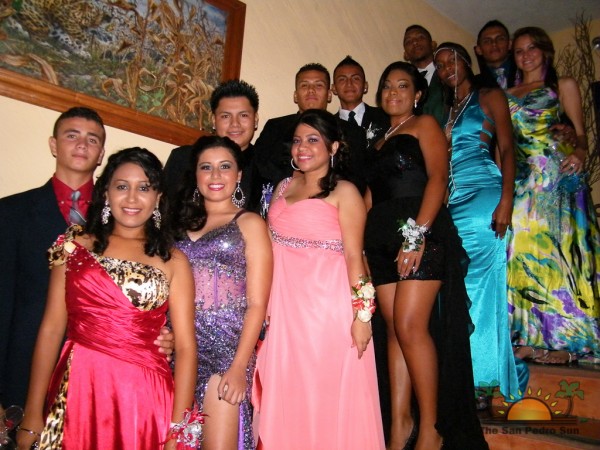Prom season is coming after the culmination of months of work. In most schools the planning began in March, others take more than a year organizing it. Traditionally, it is common that parents, grouped in committees, take care of the complete production of this highly anticipated event. However, it is becoming more popular than a consultant to take much of the responsibility.
 Silvia Flores, Silber Events adviser, explains that most parents work and have limited time to devote to the organization. It is therefore advisable to seek support.
Silvia Flores, Silber Events adviser, explains that most parents work and have limited time to devote to the organization. It is therefore advisable to seek support.
Companies organize all or part of the event: rent, dinner, decorations, music, street theater, master of ceremonies, invitations, souvenirs and even fireworks.
It sets a fee for graduating, mainly determined by the number of guests, said Luis Fernando Monge, owner of Decorate Events. How comes the advice? It may be a flat fee or a percentage of the cost of the party.
Another component is whether the activity takes place in a hotel or a function room.
The price is higher in hotels and also charged in dollars
Most committees of parents choose to hire their own place and food. And the rest of the event, leave it to the assessor.
The minimum charge per person is ¢ 25,000 and in a hotel it is usually ¢ 50,000.
The proms have become real shows, experts say. The idea is to promote holidays without alcohol consumption, keeping young people at 100% on track, says Luis Monge.
To customize the event, the advisors offer exclusive designs of logos and themes for decoration, souvenirs and invitations.
Other highlights include atmospheres with lights and fabrics, jugglers, telistas, stilt walkers and Maroon.
Another strong disbursement for the occasion is dress. For this time of year, the boutiques and shops and have collections available in evening dresses.
In Mousel, for example, short dresses from ¢ 45,000 to ¢ 135,000 long since. Marielos Arroyo, member of the store, says that traditionally, the girls go with their parents to choose the dress and scrubbing.
Valesky boutique offers gowns from ¢ 100,000 and ¢ 50,000 short from. According to Priscilla Qualls, on average their clients spend about ¢ 220,000 in the dress. Amanda is dressed in fashion from ¢ 69,500 to ¢ 320,325.
In general, prices of clothing depends on the brand and the complexity of its construction: if they have embroidery, cheap and if the design is unique.
As for accessories, it is best to choose them with the dress on, but not always used. The most common are the earrings, the price ranges from ¢ 4,000. The bracelet is optional and unusual wear necklaces or chokers.
The boys must think about the type of fabric and finishes. This determines the price.
According to Andrew Guzman, marketing manager Saul Mendez, in those stores the price of a full suit (jacket and pants) is ¢ 160,000 and up. This price includes the adjustments. The shirts cost from ¢ 30,000. The shoes can cost ¢ 65,000 or more.
Maribel Mena, Mainieri Arone, indicates that the minimum price of a tailored suit is ¢ 137,500. A shirt costs of ¢ 18,600 and up. A cotton and polyester tie it from ¢ 5,960, and silk, from ¢ 10,000.


2 comments
This is only for the elite class here in Costa Rica Diputados children and wealthy and wannabes. They are the lucky ones who went to a private school. Parents will spend nearly $800.00 on outfits and food, entertainment.
The second class citizens graduate will have a buffet dinner with cake, with a disco type music and dance at a community hall. The grads wear new blue jeans and new shoes the girls wear outfit nowhere near this price. Parents will struggle to pay even for this.
I completely agree with Gordon’s comments…